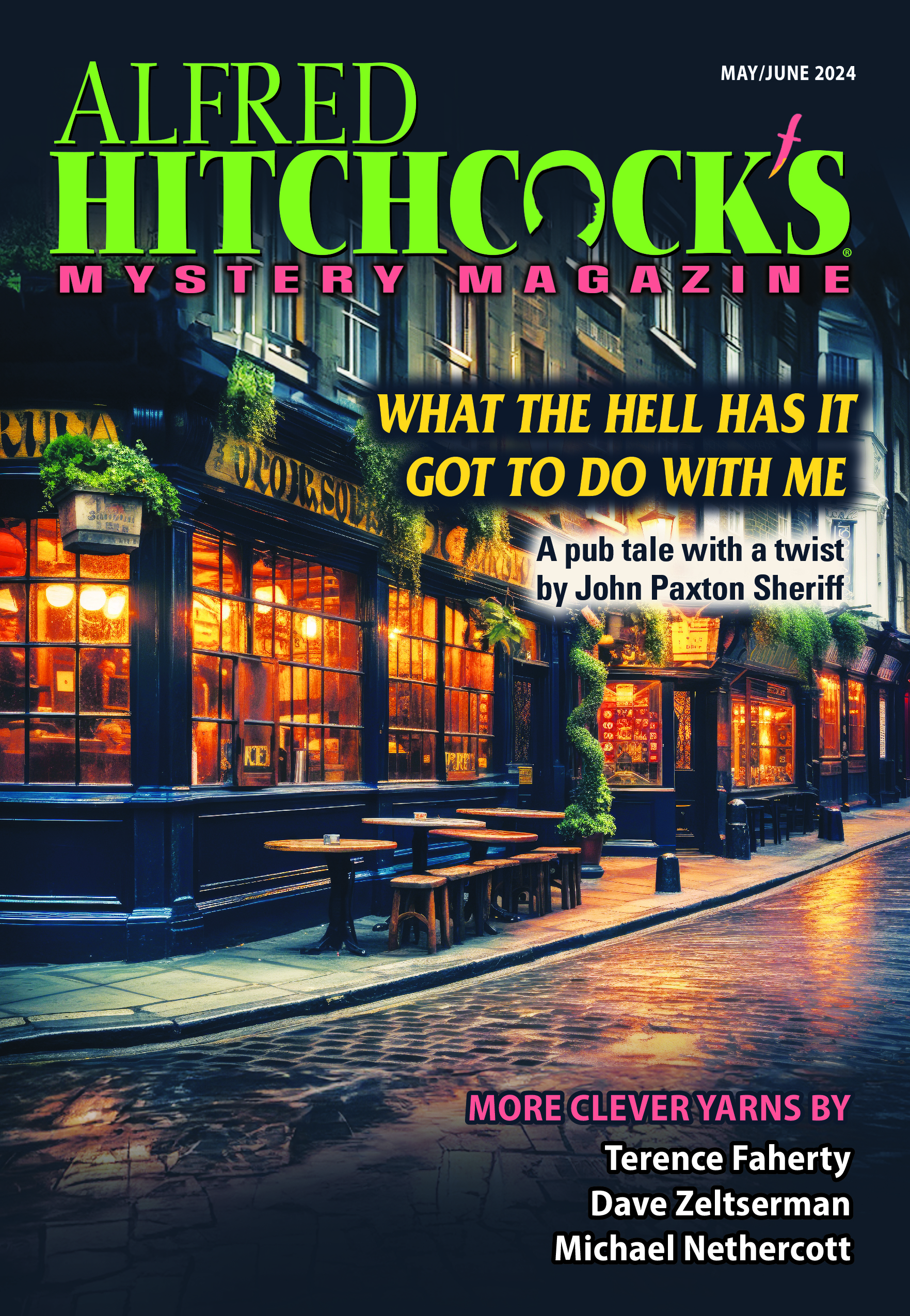Robert Lopresti is the author of Greenfellas and When Women Didn’t Count as well as many award-winning and -nominated short stories. Here he talks about his story from the March/April 2021 issue and a conundrum facing authors and readers.

I am delighted to have “Shanks’s Locked Room” in the March/April issue of my favorite magazine. It marks the eleventh appearance in AHMM of the grouchy crime writer, and that means he stars in one-third of my stories there.
But the situation is a bit more complicated. Some Shanks stories have appeared in other publications. In fact, the story I am working on right now is his twentieth adventure. And by the time you reach a score of stories about the same fellow, things get complicated.
No man is an island entire of itself, as some smarty-pants said a long time ago, and that applies to Shanks. He has accumulated quite a crowd of friends, colleagues, and rivals.
Last year I finally accepted the inevitable and created a character file, listing all the recurring characters and in which stories they appeared. And boy, I wish I had done it sooner.
You see, I have a hobbyhorse when it comes to fiction. Actually, I have a whole stable full, but this one involves character names. It bugs the heck out of me when the main characters in a story or novel are named Don, Dan, Dina, Dave, and Debby. I’m exaggerating, but not by much. There are twenty-six letters in the alphabet, last time I looked, and more than half offer a good supply of names. Why make it harder for the reader to tell the characters apart?
When I write a novel I try to make sure that no important characters share an initial or have read-alike names. (Unless there is a good reason, of course. When Agatha Christie gave two people similar names you knew damn well there was a clue involved somewhere.) Usually I type the alphabet out on separate lines and fill in the blanks with Albert, Bernstein, Connie, etc.
And I’m not the only one who used that technique. Think of Hill Street Blues. When that classic cop show started, the characters above the rank of patrolman were: Belker, Calletano, Davenport, Esterhaus, Furillo, Goldblume, and Hunter. I always wondered what happened to the character whose name began with A.
Let’s get back to my Shanks problem. Remember that?
My “Locked Room” story takes place in an oddly named restaurant, the Crab and Crow, where Shanks is dining with some friends, all of whom have appeared in previous tales. And that is when I discovered that Meghan and Nick McKenzie had shown up in one story and Fiona Makem appeared in another. Meghan McKenzie and Makem! So in the current tale I got everyone on a first-name basis as soon as I could.
My most recent appearance in AHMM,“Shanks Saves The World,” (May/June 2020) started life without Shanks. One element that survived from that early version was a young man named Connor. He is making his third appearance in the masterpiece I am currently creating, Shanks #20, and it is becoming awkward—because Shanks’s wife is Cora. Cora and Connor. How did I let that happen?
All kinds of problems can appear when an author doesn’t keep track of their characters. Arthur Conan Doyle clearly christened his narrator Dr John H. Watson, but in one story the good doc’s wife calls him James.
And names are not the only issue. In Rex Stout’s Over My Dead Body, Nero Wolfe tells an FBI agent he was born in the United States. But fifteen years later in The Black Mountain, he visits his birthplace in Yugoslavia. Stout fans have struggled for half a century to explain this mystery. I am pleased to say they can stop worrying about it, because I have discovered the solution.
If you want to hear my explanation, take me to lunch some time. Maybe at the Crab and Crow?



